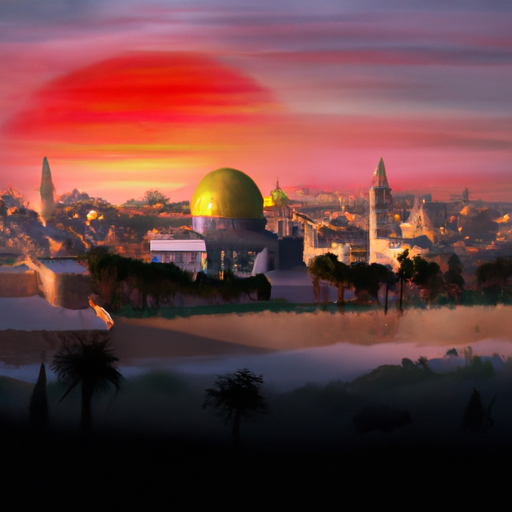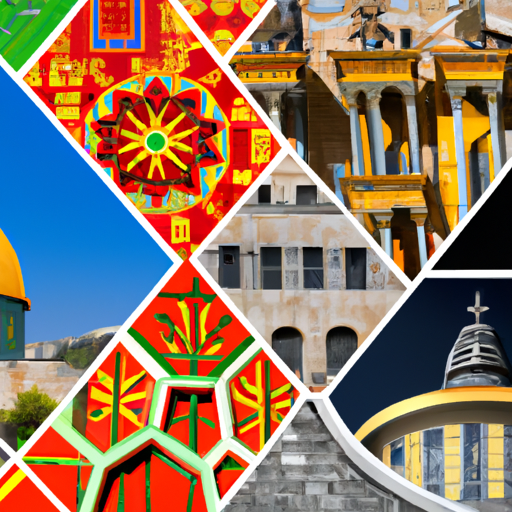This blog post takes the reader on an enlightening journey through the ancient history of Israel with Abraham Tours. It provides insights into the significant historical landmarks and the rich cultural heritage of the land that has been the cradle of many civilizations. Get ready to explore ancient Israel like never before.
'The Journey Begins: From where does the story of Ancient Israel unfold?'
The story of Ancient Israel unfolds from the very heart of the Middle East, a region rich in history and cultural significance. Nestled between the Mediterranean Sea and the Jordan River, Israel is a land blessed with an abundance of historical sites and landmarks that offer a glimpse into the past. From the ancient city of Jerusalem to the archaeological ruins of Masada, this land is a treasure trove for history enthusiasts.
As we embark on our journey through Ancient Israel with Abraham Tours, we will trace the footsteps of the many civilizations and empires that have left their mark on this land. From the biblical stories of Abraham and Moses to the rise and fall of mighty kingdoms, each step we take will be a step closer to uncovering the fascinating history that shaped this region.
Our journey will begin in the vibrant city of Tel Aviv, a modern metropolis that serves as a gateway to the ancient wonders of Israel. From here, we will travel back in time, visiting sites such as Caesarea, where the ruins of a Roman port city stand as a testament to the power and influence of the Roman Empire.
We will then make our way to the ancient city of Jaffa, a place steeped in legend and mentioned in biblical accounts. Walking through its narrow streets and ancient port, we will feel the weight of history all around us. From Jaffa, our journey will continue to the holy city of Jerusalem, where the stories of three major religions intersect and intertwine.

A picturesque view of the sunrise over the ancient city of Jerusalem, with the Dome of the Rock in the foreground.
Unearthing the Past: What secrets do the ruins of Masada hold?
Perched atop a rugged plateau overlooking the Dead Sea, the ruins of Masada stand as a testament to the resilience and determination of the Jewish people. This ancient fortress, built by King Herod the Great, has a storied history that has captivated archaeologists and historians for centuries.
The ruins of Masada reveal a glimpse into the lives of the Jewish rebels who made this fortress their last stronghold against the might of the Roman Empire. The complex system of walls, palaces, and storehouses showcases the ingenuity and advanced engineering skills of the ancient inhabitants. Walking through the remnants of this once-thriving community, one can't help but wonder about the stories of courage and sacrifice that unfolded within these walls.
Archaeological excavations at Masada have unearthed a plethora of artifacts that shed light on the daily lives of the inhabitants. From pottery and jewelry to weapons and coins, each artifact provides a piece of the puzzle in understanding the people who called Masada home. These discoveries offer invaluable insights into the culture, economy, and social structure of the ancient Jewish community.
One of the most intriguing aspects of Masada is the tragic event that took place within its walls. According to historical accounts, when the Roman army laid siege to the fortress, rather than surrendering to their enemies, the Jewish rebels chose to take their own lives. The discovery of remains and the heartbreaking story of this mass suicide have added a layer of complexity and emotion to the ruins of Masada.
Where Cultures Intersect: How has Jerusalem's cultural landscape been shaped over time?
Throughout its rich and tumultuous history, Jerusalem has been a melting pot of cultures, religions, and civilizations. This ancient city's cultural landscape has been shaped by a myriad of influences, leaving behind a tapestry of traditions, architecture, and beliefs that continue to resonate today.
From the ancient Canaanites to the Israelites, Babylonians, Persians, Greeks, Romans, Byzantines, Arabs, Crusaders, Ottomans, and British, Jerusalem has been a coveted prize for countless empires and civilizations. Each group that ruled over the city left their mark, contributing to the diverse cultural heritage that is woven into the fabric of Jerusalem.
Old city tour : The Old City, a UNESCO World Heritage site, is a prime example of Jerusalem's cultural mosaic. Within its walls, one can wander through narrow alleyways and discover sacred sites revered by three major world religions: Judaism, Christianity, and Islam. The Western Wall, the Church of the Holy Sepulchre, and the Al-Aqsa Mosque are just a few of the iconic landmarks that showcase the city's religious and cultural significance.
The architecture of Jerusalem also reflects its cultural diversity. From the ancient stone buildings of the Old City to the grand Ottoman-era structures in the newer parts of the city, Jerusalem's skyline is a testament to the various architectural styles that have influenced its development over time. The mix of Roman, Byzantine, Islamic, and Crusader architectural elements creates a unique visual tapestry that tells the story of Jerusalem's past.
The cultural landscape of Jerusalem is not just limited to its historical sites and buildings, but also extends to its vibrant markets, known as souks. The bustling streets of the Old City's markets, such as the Arab market (Suq), are a microcosm of the city's cultural diversity, where vendors sell everything from spices and textiles to religious artifacts and traditional crafts. These markets have been a meeting point for different cultures, fostering trade and exchange throughout the centuries.

A vibrant collage depicting the diverse cultural influences in the architecture of Jerusalem.
Walking through History: What can the archaeological sites of Megiddo tell us about the ancient civilizations?
The archaeological sites of Megiddo offer a fascinating glimpse into the ancient civilizations that once thrived in the region. Situated in northern Israel, Megiddo has been inhabited for over 5,000 years and has served as a strategic crossroads for trade routes between Egypt, Mesopotamia, and Asia Minor. Excavations at Megiddo have unearthed layers upon layers of history, shedding light on the cultures and societies that shaped this ancient city.
One of the most significant discoveries at Megiddo is the presence of a large fortified city dating back to the Bronze Age. The remains of massive stone walls and gates provide evidence of a sophisticated urban center, indicating a high level of organization and governance. The city's strategic location near important trade routes suggests its role as a hub for commerce and cultural exchange.
The archaeological findings at Megiddo also reveal the religious and spiritual beliefs of its ancient inhabitants. Excavations have uncovered temples and altars dedicated to various deities, offering insight into the religious practices of the time. The presence of intricate pottery, jewelry, and other artifacts further demonstrates the artistic and craftsmanship skills of these ancient civilizations.
Furthermore, Megiddo's archaeological sites have provided valuable information about the military history of the region. The discovery of ancient stables and chariot depots suggests the importance of cavalry and warfare in ancient times. The city's location on a hilltop provided strategic advantages for defending and controlling the surrounding areas.
The journey with Abraham Tours, through the ancient land of Israel, is not just about exploring historical sites; it's about immersing oneself in the rich tapestry of the past, understanding the significance of these landmarks, and appreciating the intricate blend of cultures that have shaped this region. It's a journey that brings history alive and creates an unforgettable experience.